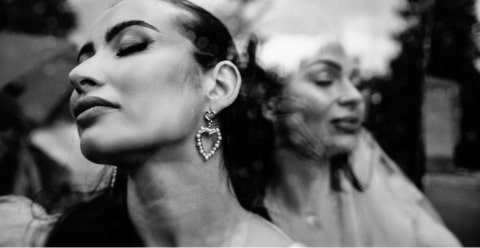A report by Statista clearly shows that in a few recent years, AI has disrupted and reshaped many industries — including photography. Through sophisticated analysis tools, it can effortlessly spot anomalies that can escape your eye, like overexposure and oversaturation.
As this technology becomes more used in software, it’s no longer reserved just for tech enthusiasts. Quick and simple AI photo editing is at your fingertips and ready to transform your art, so let’s look at the three most common photo editing mistakes it can help you with.
1. Overexposure
Overexposure happens in various conditions, but it’s most common in photos taken in bright sunlight and strong artificial lighting. It can also result from improper exposure settings, such as aperture, shutter speed, or ISO. The result of overexposure is a loss of detail in highlights, which leads to a flatter appearance.
AI-driven photo editing tools like Imagen detect overexposed areas in your photos. They automate photo editing by adjusting the exposure levels, recovering lost details, and enhancing overall picture quality.
» Looking for a game changer? Check out the ultimate photographer’s backup and workflow guide
2. Over sharpening

While sharpening is a common technique used to improve crispness, applying too much of it can lead to the exaggeration of edges and unnatural-looking halos, resulting in oversharpened photos. Oversharpening typically creates harsh and unrealistic outlines around the edges of objects, making the photo appear unnatural and sometimes even pixelated. The issue is particularly noticeable in high-contrast areas, where the transition from light to dark is very sharp.
AI tools use machine learning to recognize sharp edges. They can then selectively apply sharpening to areas that genuinely need it, avoiding over-sharpening.
3. Oversaturation

Oversaturation can make your photos look unrealistic or artificial. Colors may appear unnaturally bright and intense, losing their subtle nuances and becoming unrealistic. Over-saturated photos are detail loss and a lack of visual balance in your pictures. Oversaturated photos can also display color banding, where you see noticeable shifts in color instead of smooth transitions.
AI tools can detect oversaturated areas in pictures by analyzing color histograms and patterns. Some even offer suggestions for saturation adjustments tailored to your photos, helping you achieve a pleasing and realistic appearance.
» Are you a color-blind photographer? See how you can maximize your creative potential
Incorporating AI into your editing workflow
Incorporating AI into your editing workflow can significantly streamline the entire post-processing process. You can use AI-driven batch processing for consistent edits across multiple photos and save yourself a lot of time.
Here are some tips if you plan on including AI in your workflow in 2025:
- Training First: Familiarize yourself with different AI tools and learn how they process photos to get the best results.
- Backup Always: Save the original photos in a secure place so you can revert the photos if AI changes don’t align with your photo editing style.
- Stay Updated: Keep up with the latest advancements in AI to stay ahead of the competition.
» Be cautious when using AI-powered editing tools that require uploading photos to external servers for processing. Read their privacy policy if you’re working with sensitive or confidential content.
The light behind the iris
AI transformed everyone’s approach to photography. But as with all tools, you need to use it moderately. While AI can provide efficiency and precision, the artistry and your unique vision should always be at the forefront.
As we look to the future of photography, the fusion of AI and human creativity promises even more innovative experiences.
One of the tools pioneering this process is Imagen, which seamlessly combines with your workflow, ensuring the efficiency and quality of the final product.
Sign up for free and see for yourself with 100 free AI edits
____




